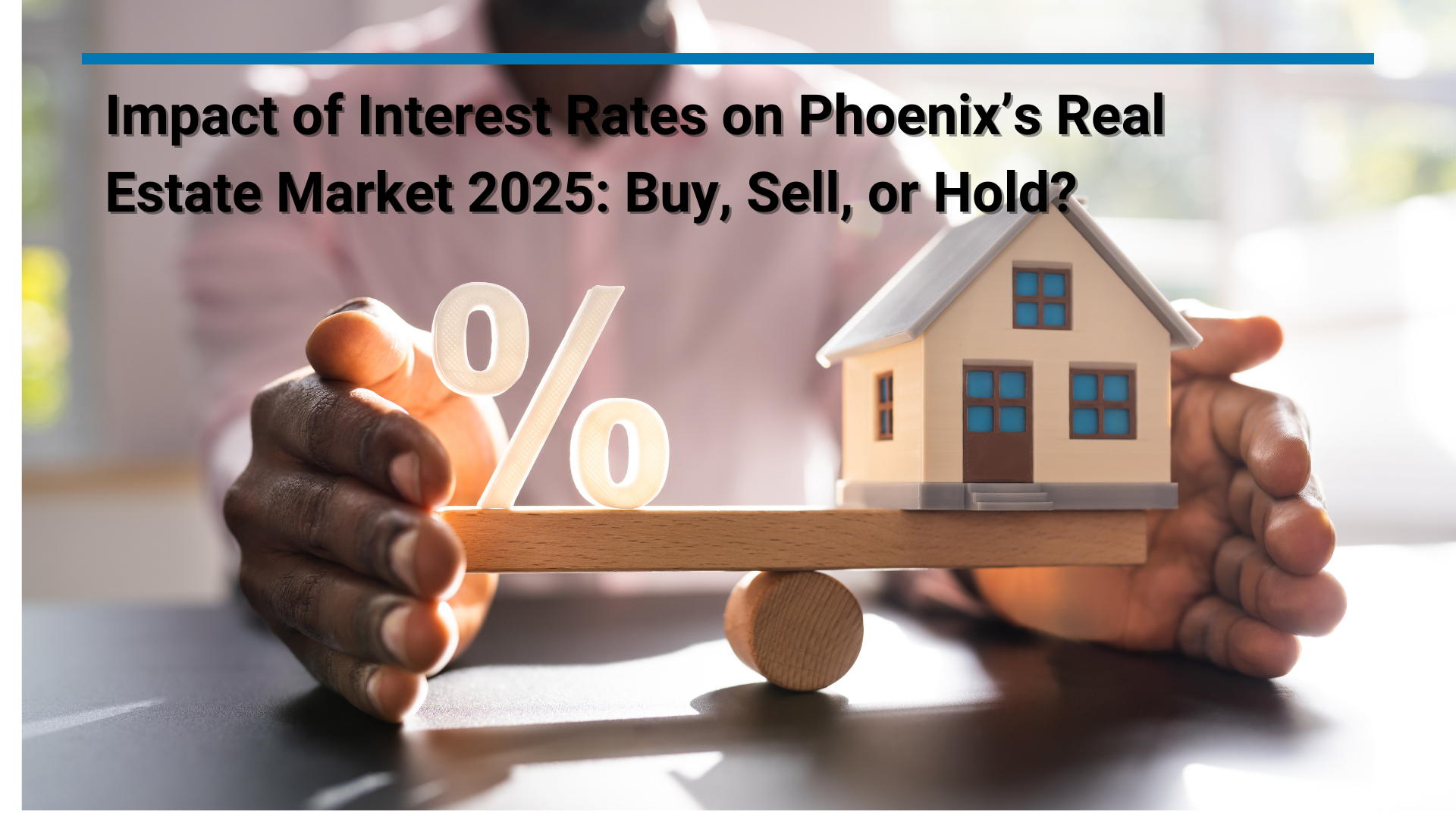Phoenix, Arizona’s bustling real estate market is feeling the pulse of interest rates in 2025, guiding decisions for buyers, sellers, investors, and property managers. Whether you’re buying a home in Chandler, selling in Scottsdale, or managing rentals in Mesa, understanding rate impacts is crucial. This guide explores Phoenix’s housing and rental trends, the effects of rising and falling rates, and expert strategies to thrive in 2025’s market. Let’s navigate Greater Phoenix’s real estate landscape together.
How Interest Rates Shape Phoenix’s Real Estate
In Greater Phoenix, a hub for urban and suburban living, interest rates influence home affordability, buyer demand, and rental dynamics. As of April 2025, mortgage rates range from 5.5% to 6%, driven by Federal Reserve policies and global trade fluctuations. With median home prices at $450,000 (up 1.7% year-over-year), these rates are reshaping Phoenix’s diverse market.
Rising Interest Rates: Easing Buyer Demand, Fueling Rentals
Rising rates—potentially surpassing 6% in 2025—cool Phoenix’s homebuying market. On a $450,000 home, a rate hike from 5.5% to 6.5% increases monthly payments by about $240, pushing some buyers to rent. This drives rental demand, with Phoenix’s 7.5% vacancy rate (above the national 5.8%) and $1,250 median one-bedroom rents reflecting a balanced but active market. Suburbs like Mesa and Glendale see strong rental interest from families and young professionals.
Higher rates may soften home prices, favoring buyers. Negotiations average 97.7% of list price, with $300K–$500K homes seeing $6,300–$10,000 discounts plus $10,000 in seller-paid closing costs. A March 2025 spike in $250K–$500K contracts, fueled by a 6% rise in FHA loan applications, highlights buyer opportunities. Phoenix’s market has historically rebounded from rate hikes, as seen in 2004–2006, with price recovery within 12–18 months.
Falling Interest Rates: Triggering a Market Boom
A rate drop to 4.5% or below, though unlikely in 2025, could unleash a buying frenzy in Phoenix. Lower rates boost affordability, drawing renters into homeownership and pushing prices beyond the current 1.7% growth. This would tighten rentals, dropping vacancy rates and raising rents. In 2020–2021, rates of 2.5–3% drove 20–30% price surges in neighborhoods like Arcadia and Queen Creek. If rates fall, property managers should adjust leasing to retain tenants and capture higher rents.
Phoenix Real Estate Outlook for 2025
Forecasts suggest rates will hold at 5.5–6% through mid-2026, supporting a stable Phoenix market. Population growth (up from 0.4% last year) and job gains from tech firms like Intel fuel demand. Key trends include:
Home Sales: Steady demand, with rising supply creating a buyer’s market. The $250K–$500K segment is hot, driven by first-time buyers.
Rentals: A 7.5% vacancy rate and stable rents ensure cash flow, with suburbs like Gilbert and Buckeye attracting long-term tenants.
Buy, Sell, or Hold in Phoenix?
Hold: If your rentals are performing, hold tight. Phoenix’s rental demand supports income, and price growth ensures value. Watch for rate spikes above 6.5%, which could slow sales.
Buy: Target deals in growth areas like Buckeye or Chandler, where supply offers leverage. First-time buyers can use FHA loans or down-payment assistance.
Sell: Sell only if overexposed and rates climb, softening demand. Well-priced homes in Scottsdale or Tempe still draw buyers, but expect concessions.
Timing and Strategy: Leverage Local Expertise
Track the Fed’s rate moves, as small changes impact Phoenix’s market. Work with Rosenbaum Realty Group’s Phoenix office for expert guidance on buying, selling, or managing properties. Their market insights help you seize opportunities in this dynamic region.
Ready to make your move? Contact Rosenbaum Realty Group in Phoenix for top-tier real estate and property management services. Let’s make 2025 your year in Phoenix’s market!
Sources: Greater Phoenix market data, Arizona rental trends, Federal Reserve projections.

By Rosenbaum Realty Group - Wednesday, April 30, 2025

